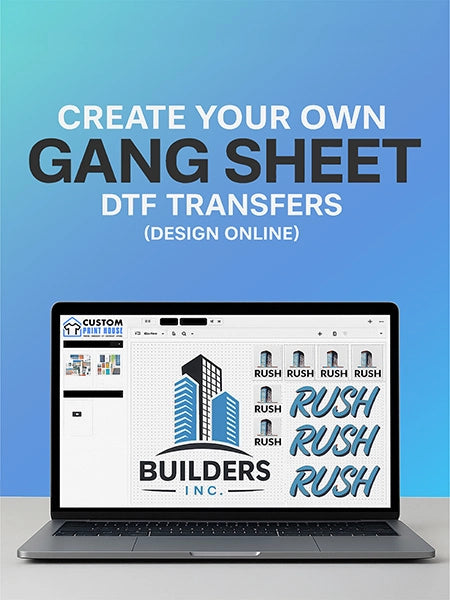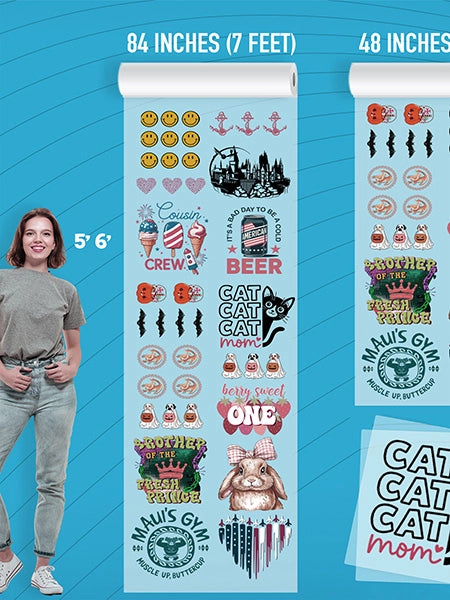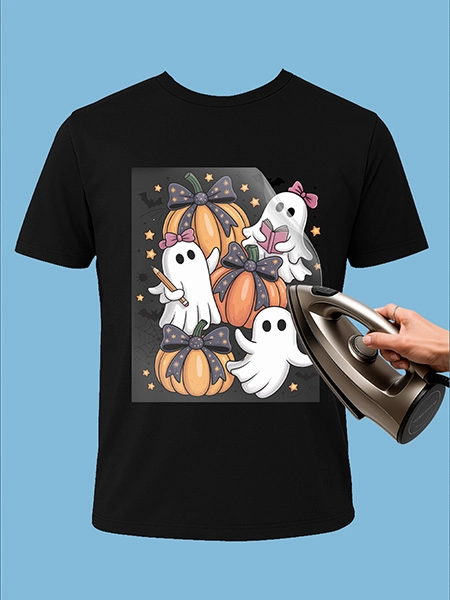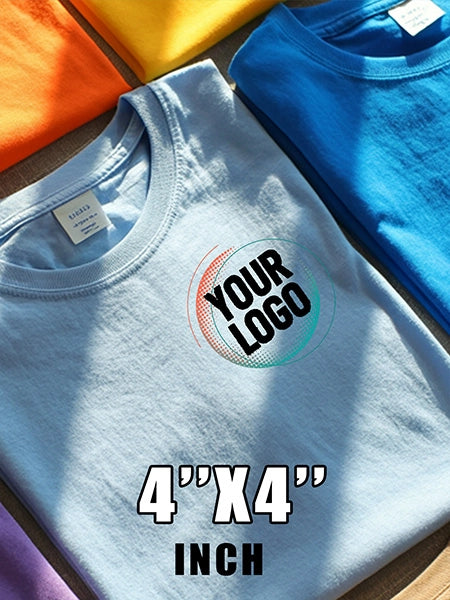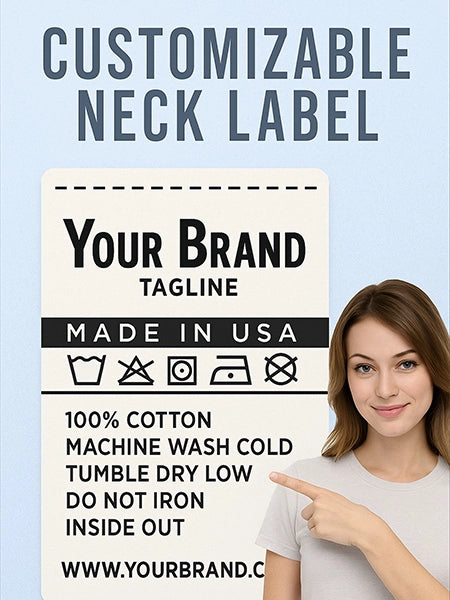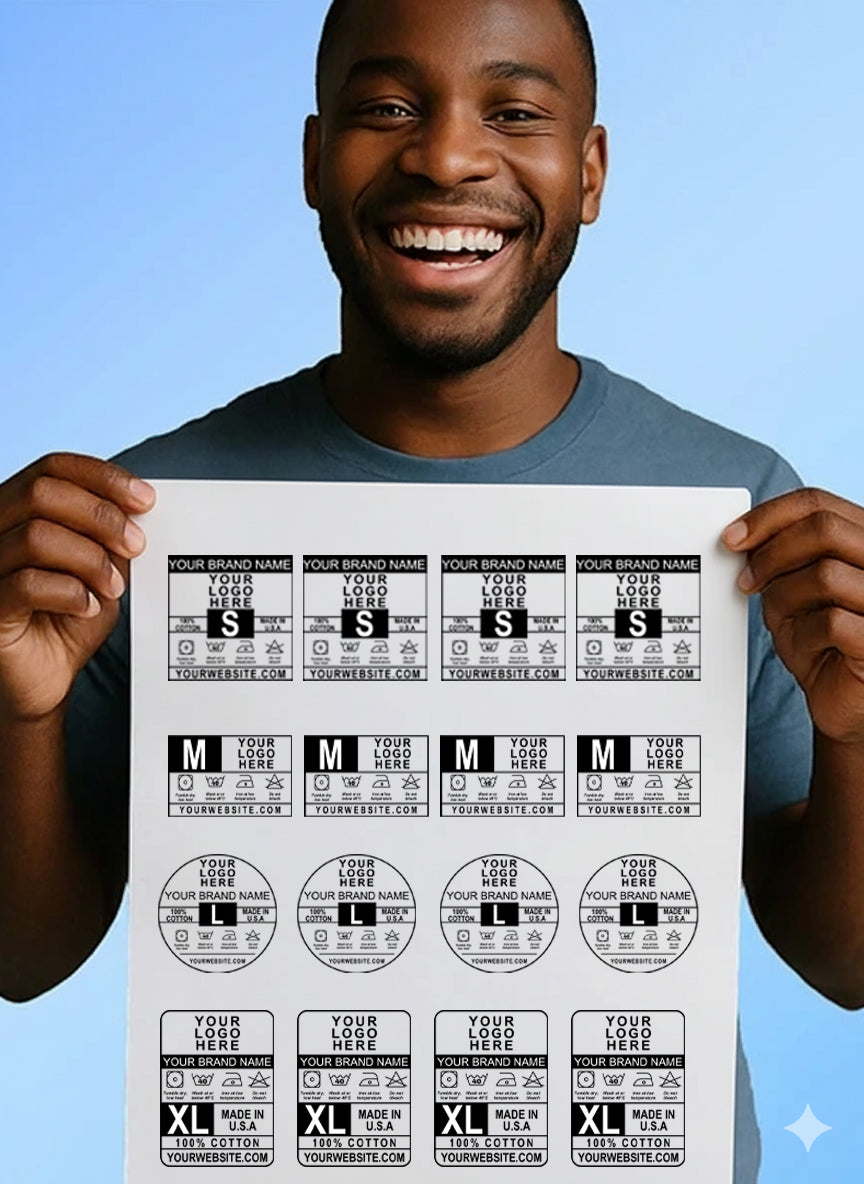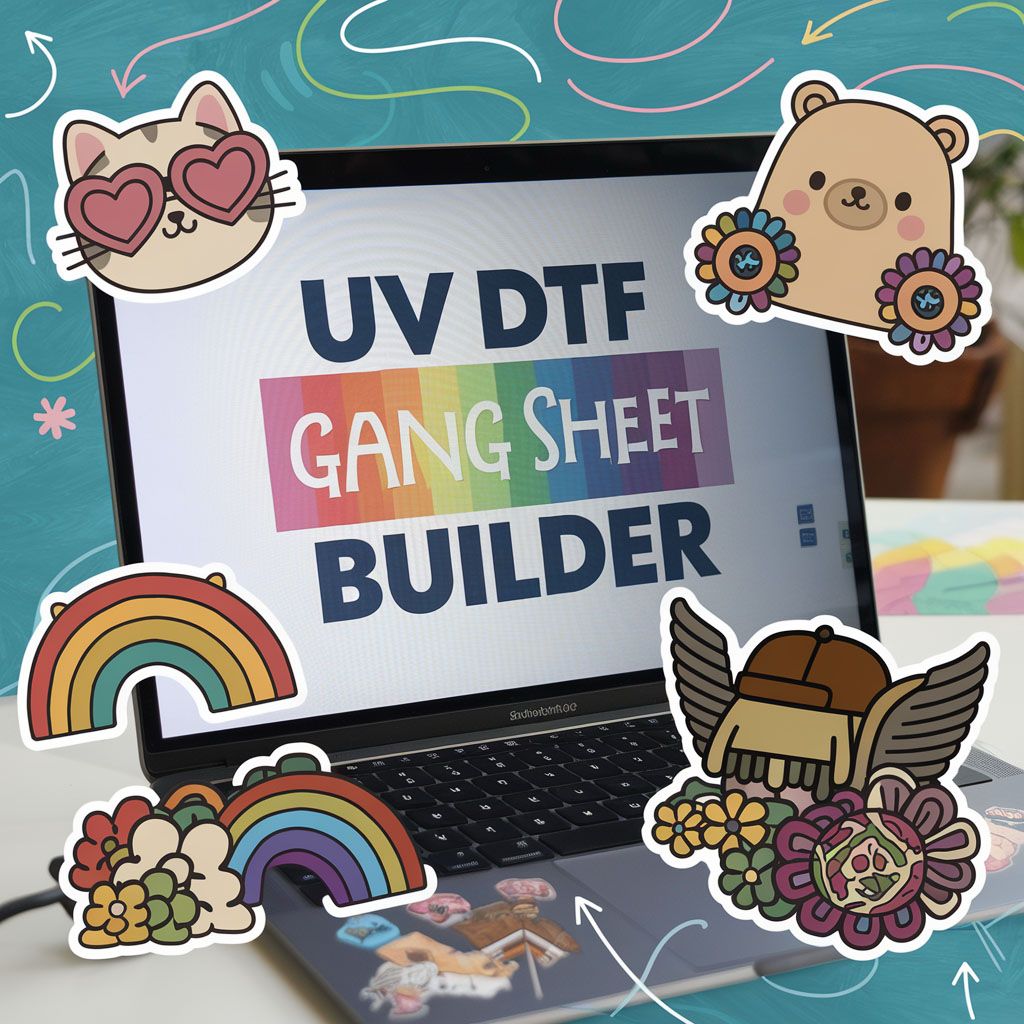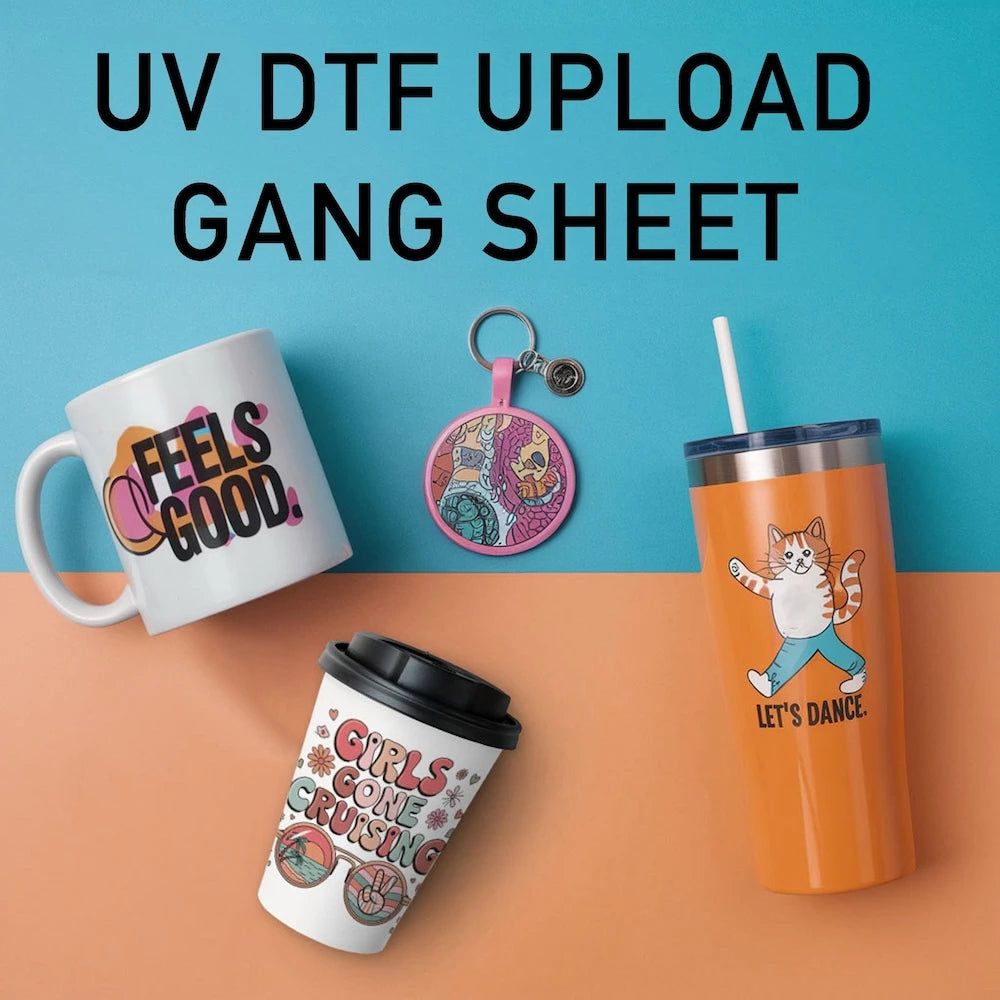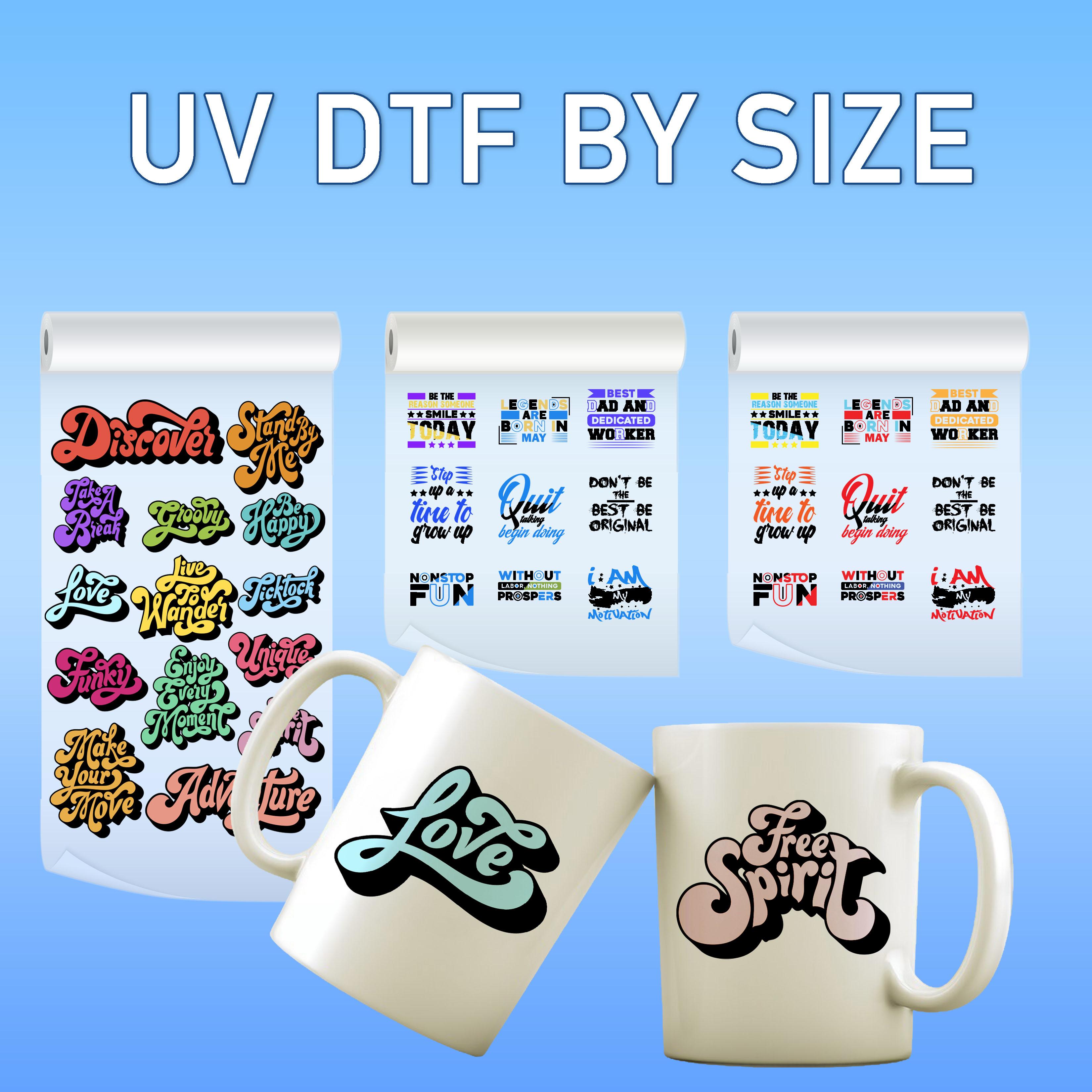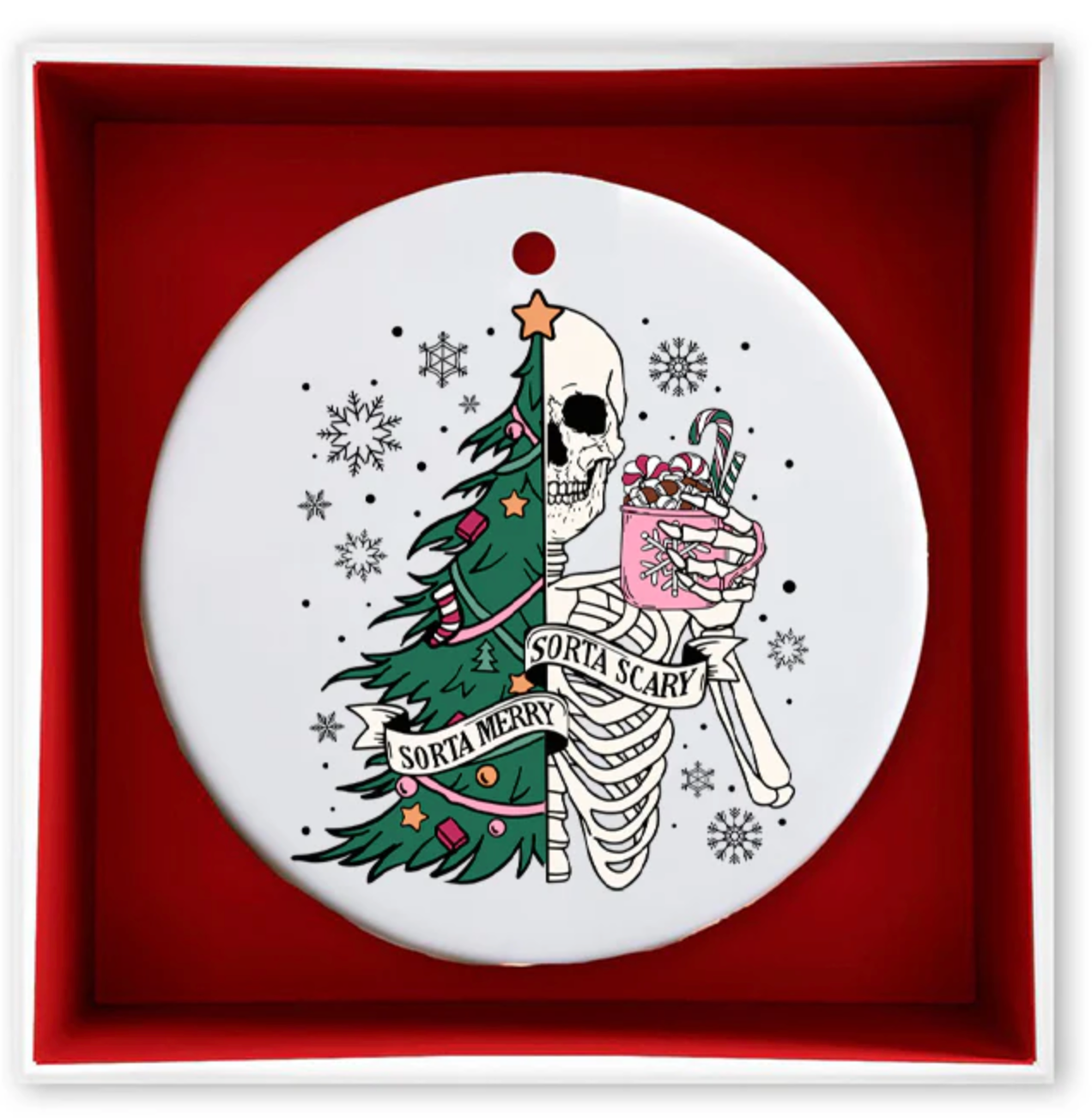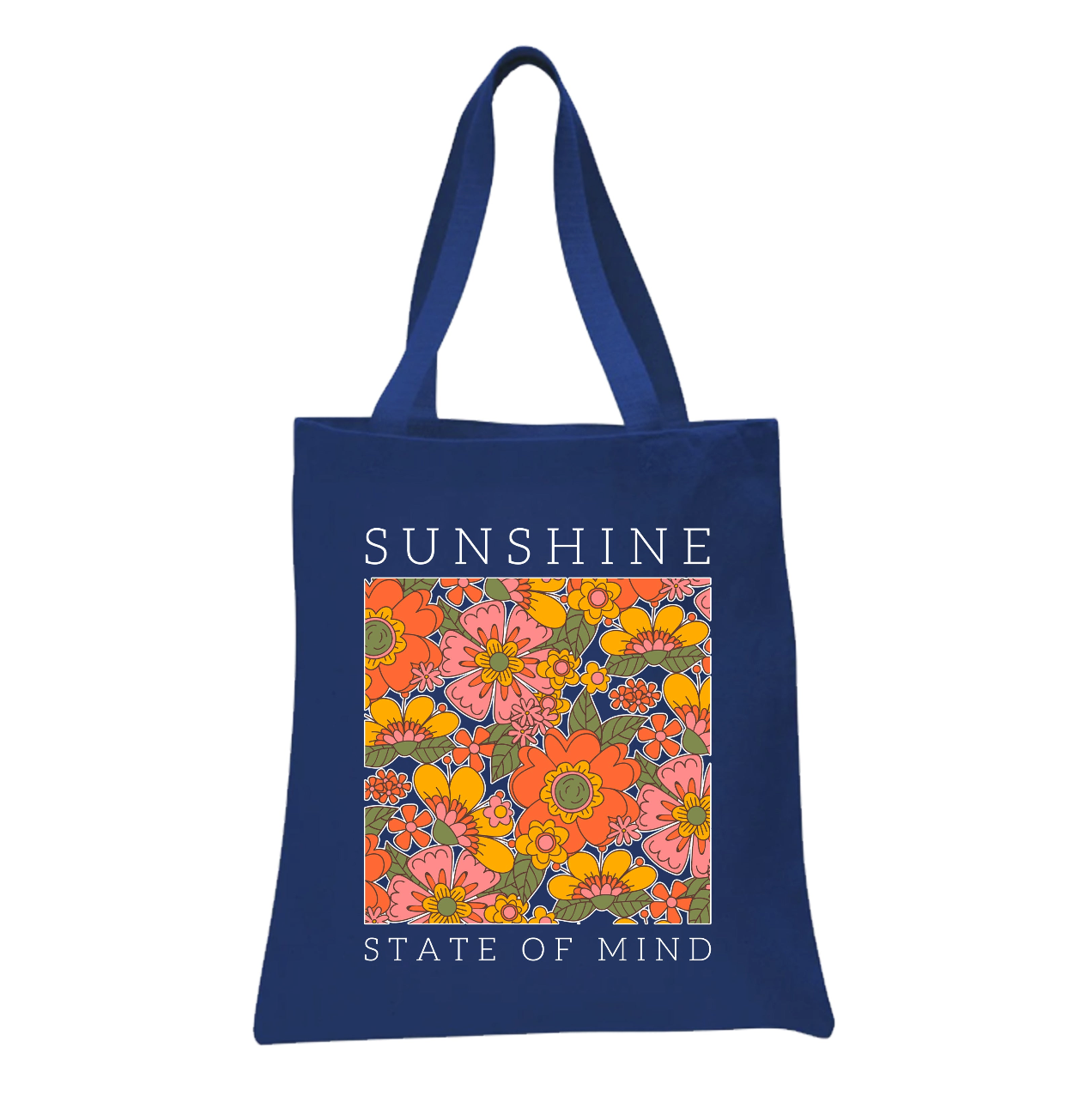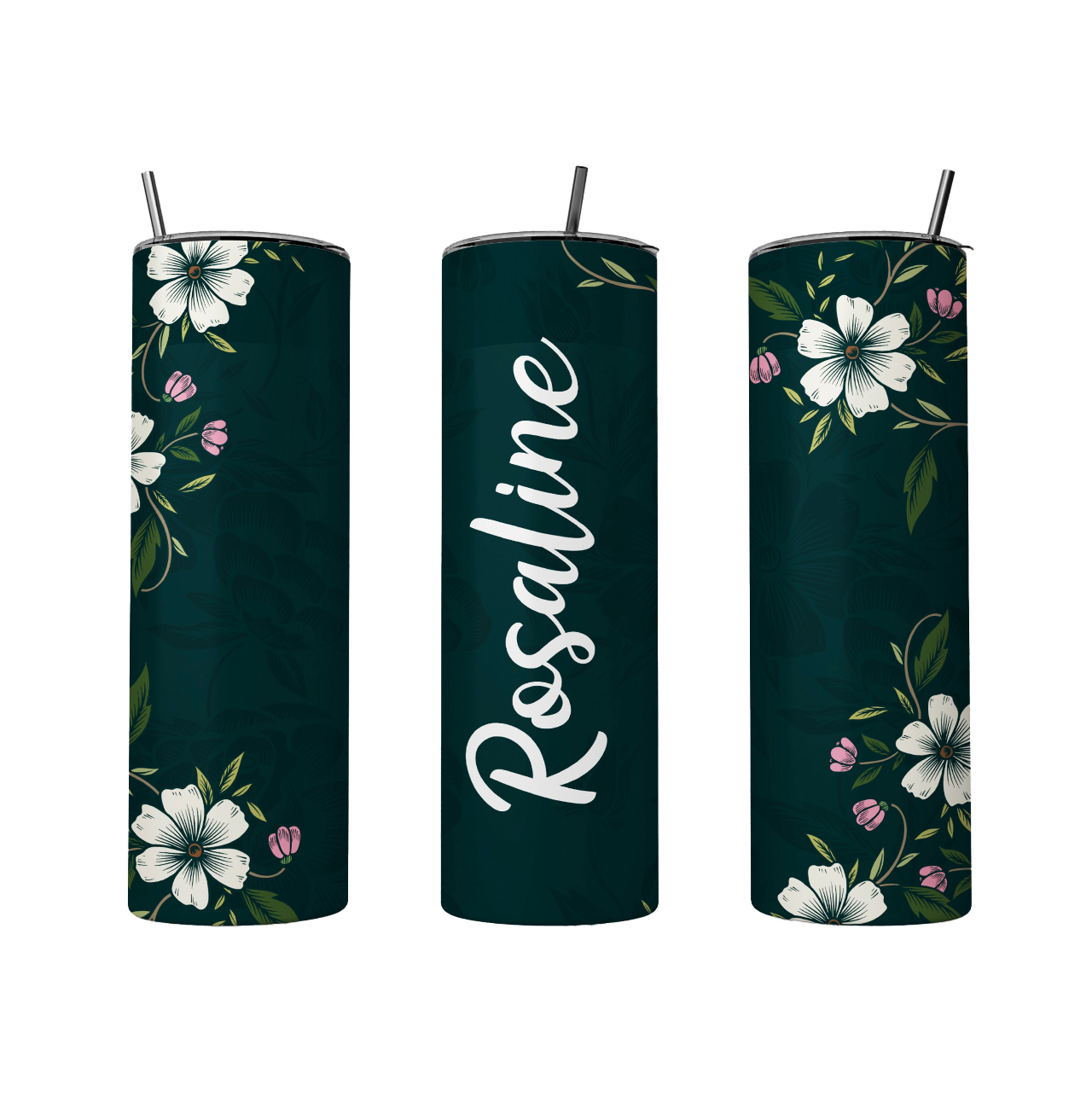Everything You Need to Know About UV DTF Transfers
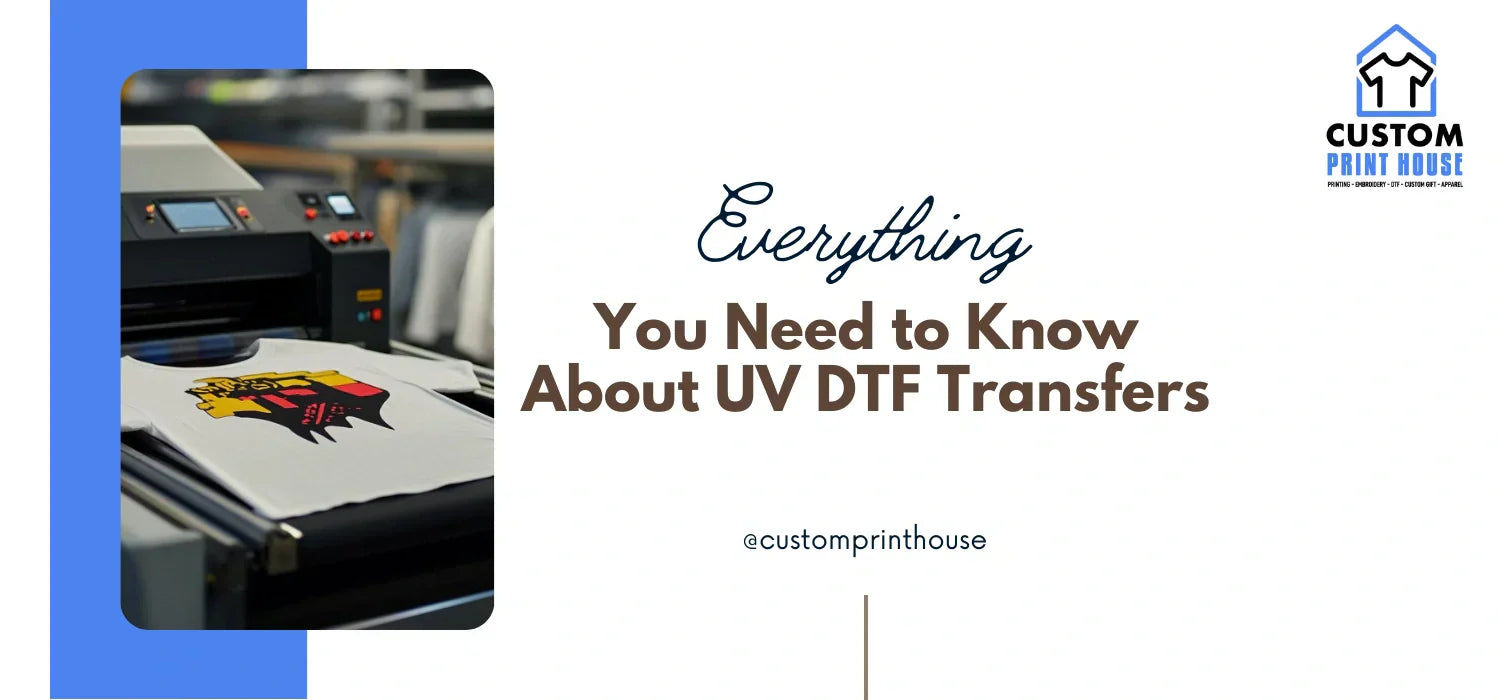
UV DTF stands for Ultraviolet Direct to Film. UV DTF transfers are one of the newest technologies in the printing industry. The most important aspects of this printing technique are the ink and a film called PET.
What are UV DTF Transfers?
It is the process of printing with inks that dry with the help of UV light onto a special PET film. After this process, the adhesive layer of the film is transferred. Printing can be done on almost any surface using this technique. UV DTF Transfers consist of printing, adhesive application, transfer, printing, and peeling processes.
How to Make UV DTF Transfers?
UV DTF coatings work according to the following principles:
First, the application begins with the printing stage. Printing is done on a transparent PET film using a printer. The special ink is cured under UV LED light. Then, the adhesive stage begins. A special UV DTF adhesive, in liquid and powder form, is applied to the back of the printed film. The adhesive is cured again with UV light. This creates an adhesive layer.
During the transfer stage of UV DTF transfers, the transfer is placed on the surface to be printed. During the printing stage, the laminating machine and a simple transfer printing tool are used to pass over the product to be bonded. At room temperature, the adhesive becomes active, resulting in a permanent transfer on the surface. During the peeling process, the film is slowly peeled off. This leaves the print on the surface.
How to Print UV DTF Transfers?
For UV DTF labels, equipment such as a UV DTF printer, special ink set, transparent PET film, special adhesive, drying unit, laminating machine, and transfer tool is required. The UV DTF process is carried out in two stages.

During the preparation stage of the transfer, the design and printing process is carried out. First, the company that will perform the application does the design work. The design work can also be done by the customer. In the UV DTF transfer process, the prepared design is then printed onto a transparent PET film. The ink is quickly dried using UV LED lamps.
The adhesive stage is the most critical stage. The back surface of the printed film is subjected to the adhesive process using a special powder adhesive. Excess powder is shaken off and cleaned. Alternatively, liquid adhesive can be applied directly to the back of the film using a spatula. Once the adhesive has dried, the film is cured under UV light. The adhesive layer is formed.
Transfers that have been applied with adhesive and dried are stored in a special room away from dust and moisture.
UV DTF transfers stored in warehouses are subjected to surface cleaning. The surface to be applied must be dry and free of grease. Wiping with an alcohol-based cleaner may be ideal. After the transfer is cleaned, it is placed so that the adhesive layer comes into contact with the product. The transfer is passed through a lamination machine. This process is carried out at room temperature. The lamination machine activates the adhesive and the bonding process is completed perfectly.
UV DTF transfers are peeled immediately after the lamination process. The PET film is peeled slowly and carefully. This ensures that the print remains perfectly intact on the surface. The final stage is the curing stage. For maximum durability, a full curing time of 24-72 hours is required. After this period, the application can be washed and is ready for outdoor conditions.
What is the Difference Between UV DTF and DTF?
There is a technological difference between the two printing techniques. In normal DTF printing, high heat and pressure are applied to fabrics. It is flexible and unaffected by repeated washing. UV DTF transfers, on the other hand, can be applied to any hard surface at room temperature without heat. This creates a layer that is resistant to outdoor conditions. In fact, it can be said that the fundamental difference between the two methods lies in the use of heat versus no heat.
Printing Process for UV DTF Transfers
Custom UV DTF transfers begin with the design phase. Once the design is prepared by the customer or printing company, it is applied to the ink-free side using powder adhesive. Once the adhesive has dried, the prepared transfers are stored at room temperature. Without the need for heat, the transfer is placed so that it touches the adhesive surface.
A laminating machine is passed over the transfer. After the lamination process, the PET film on the surface is slowly peeled off. The final stage is the curing stage. After a curing time of 24-72 hours, the transfer is ready.
Cost of UV DTF Transfers
UV DTF decals included, transfer costs can vary both per unit and in terms of production costs. The average price of a UV DTF printer ranges from $5,000 to $15,000. The UV curing unit generally comes integrated with the printer. The average price of a laminating machine ranges from $100 to $500. Therefore, the total initial investment cost ranges from $5,100 to $15,500.
Unit costs are as follows:
- PET film ranges from $0.10 to $0.30.
- UV ink ranges from $0.05 to $0.20.
- Adhesive, either powder or liquid, ranges from $0.05 to $0.15.
- Electricity and wear costs range from $0.02 to $0.05.
- Labor costs average between $0.05 and $0.15.
- The total unit cost averages between $0.27 and $0.85. The unit cost applies to prints measuring 10x10 cm.
The cost may be affected by the following factors:
- Printing area
- Printing density
- Adhesive type
- Economies of scale
- Waste ratio
Can UV DTF Transfers Be Applied to Hard Surfaces?
The transfer process can definitely be applied to hard surfaces. In fact, the biggest advantage of this method is that it can be applied perfectly to hard surfaces. This is the biggest difference that sets this technology apart from others.

Application is performed at room temperature, which is heat-resistant. Application is performed using the lamination process. This makes it suitable for use on all heat-sensitive materials. Thanks to its strong and versatile adhesive, it offers incredible durability.
When UV inks dry, they form a hard, scratch-resistant layer. This feature makes the application suitable for hard surfaces. UV DTF transfers can be applied to hard surfaces such as wood, glass, metal, plastic, ceramic, leather, and rubber.
What Type of Printer is Required for UV DTF Transfers?
The printer used for the process is different from inkjet or laser printers. It has a special technology. The working principle of the printer is explained in detail below:
- UV inks specially produced for printers have the property of drying instantly under UV light. These inks solidify immediately upon application and do not spread.
- UV LED curing lamps are located directly under the printer head. UV LED lamps harden the ink as soon as it is sprayed. This ensures that the print is high-resolution and reflects sharp details.
- The white ink system is another feature of the transfer. White ink is printed in layers to serve as a base for other colors. This allows vibrant and opaque colors to be achieved on dark-colored transparent films.
- PET film is the most important element of the transfer. PET film acts as the carrier layer.
Small desktop printers are sold at an average price of between $5,000 and $10,000. These printers range in size from 30 to 60 cm. A medium-format printer sells for an average price of $10,000 to $20,000. Their dimensions are 60-180 cm. Large-format printers are industrial in style. They are 180 cm and above in size. They cost around $20,000. The price may be slightly higher depending on the brand and model.
How Fast Is the UV DTF Printing Process?
The printing time varies depending on which stage of production is being measured. The printing time is evaluated in two stages: preparing the transfers and applying them to the customer's product. The transfer preparation stage takes an average of 5-10 minutes. The transfer application stage takes an average of 1-2 minutes. The full curing stage takes an average of 24-72 hours.

The design time takes an average of 2-5 minutes. This time may vary depending on the complexity of the design and customer approval. The gluing and drying process can take an average of 2-4 minutes. After the powder adhesive is sprinkled, it dries in 15-20 seconds under UV light. The average preparation time per design is 5-10 minutes. The curing stage takes the longest time.
These timeframes apply to a single product. For example, for an order of 50 items, it may take 30-60 minutes for all films to be ready. This timeframe does not include curing time.
The transfer application period is as follows:
- Cleaning the surface with an alcohol-based cleaner takes approximately 30 seconds.
- Lamination and transfer time is approximately 15-30 seconds.
- Film removal takes approximately 15 seconds.
- The total application time is approximately 1-2 minutes per product.
Instant drying is one of the factors that shorten the process time. Applications that do not require heat also shorten the process time. Fast transfer stocks are important factors that shorten the process time.
How Long Do UV DTF Transfers Last on Clothing?
UV DTF transfers, when applied correctly and produced with good quality, can withstand 30-50 washes. For the application to last longer, the curing time must be fully completed.
Washing instructions must be followed exactly. Washing the products with cold or lukewarm water is recommended. Washing with excessively hot water may damage the adhesive. Using strong detergents and bleaches may also be harmful. Using natural detergents is recommended. Machine drying should not be used for these types of products. Natural drying methods in sunlight or at room temperature should be preferred.
UV DTF processes are not resistant to stretching. Good results cannot be achieved on fabrics that stretch more than 5%. Fabrics that stretch excessively cause small cracks in the transfers over time. Therefore, it is preferable to perform the process on cotton and less stretchy fabrics.
Are UV DTF Transfers Environmentally Friendly?
The answer to this question is yes. UV DTF transfers are more environmentally friendly compared to traditional methods. They ensure excellent results in terms of preventing water waste and energy efficiency. There is no water consumption during application. Therefore, significant water savings are achieved. Since no heat is required, considerable energy savings can also be made. There is no wastewater or harmful chemical emissions. As it is locally produced, it can be said to have a positive impact on carbon emissions.
How Should UV DTF Transfers Be Handled?
Maintenance recommendations must be evaluated from both the manufacturer's and consumer's perspectives. From the manufacturer's perspective, storage must be carried out in a cool and dry environment. The use of flat storage methods will be beneficial. In other words, transfers must be stored in a large roll without being rolled up. The surface must be thoroughly cleaned before the transfer is applied.

It would also be beneficial for consumers to take certain care recommendations into consideration. UV DTF Transfer products should not be washed immediately after purchase. It would be beneficial to wash them for the first time after 72 hours. Products should be washed with cold or lukewarm water. Bleach or chemical-based detergents should not be used during washing. If possible, washing should be done with natural detergents and cleaners. If possible, products should be washed by hand.
If washed in the machine, clothes should be turned inside out before washing. When ironing, the iron surface should not come into direct contact with the printed surface. The iron steam should be kept away from the product. Garments with transfers should be stored on hangers. When folding, the area with the transfer should not be placed at the fold.
Where Can You Buy UV DTF Transfers Online?
Custom Print House offers you the best UV DTF transfer products. Quality and craftsmanship are crucial in UV DTF products. You can shop with confidence from Custom Print House without compromising on quality or price.

